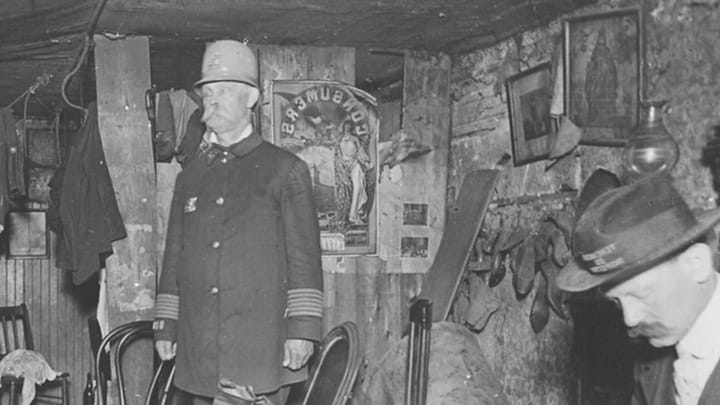The Tenement Museum in New York City isn’t just dedicated to educating visitors about the history of immigration in America—it’s also the closest thing to a time travel machine around today.
The museum building was once an actual tenement, and museum curators have renovated several apartments to recreate different periods in the building’s history. Each apartment exhibit represents a specific year in the life of the building, as well as the life of the family who lived there. But museum researchers aren’t just interested in approximating the look of a 19th and early 20th century tenement—they’re committed to getting all of the details right, down to the moldings.
Unfortunately, the problem with this kind of commitment to detail is that traditional research methods fall a bit flat when it comes to the material history of America’s working classes. There are plenty of organizations dedicated to preserving the furniture, art, and clothing of kings and queens, but up until recently, most preservationists paid little attention to the possessions of the poor.
So the Tenement Museum researchers came up with their own research methods. They commissioned analyses of the tenement building’s wallpaper and finishes to put together a picture of the walls in the past. For their mid-19th century exhibit, they searched through the earliest issues of Harper’s Weekly for illustrations of urban life. And for their early 20th century apartment, they used crime scene photos.
Museum curator David Favaloro told mental_floss that crime scene photos provided the most realistic depiction of life in an early 20th century tenement. The issue with recreating the early 20th century wasn’t a lack of materials—plenty of Progressive Era reformers had written about the tenements, and Jacob Riis famously published an entire book of tenement photographs called How the Other Half Lives. The issue was that these reformers, while well-intentioned, were biased: their depictions accentuated the worst of tenement life—its squalor and overcrowding—in an attempt to inspire reform. They weren’t showing life in the average tenement.
That’s where crime scene photos come in. Favaloro explained that since crime scene photos were taken with only the motivation to document a crime, any furniture or decorations in the background were completely incidental. Which means they actually provide one of the most objective looks into early 20th century material culture. “Crime scene photos were less staged,” Favaloro explained. “No one had a chance to straighten up. They’re as is, which makes them the most spontaneous image of a tenement apartment that exists in the early 20th century.” Many of the apartments seen in crime scene photos were actually more richly furnished and lovingly decorated than the photos taken by Riis, giving a sense that these apartments could be made into a home, Favaloro says.
For their recreation of the early 20th century Rogarshevsky family apartment, researchers referenced multiple crime scene photos, as well as other sources. But when it came down to the actual renovation of the apartment, one crime scene photo in particular stood out. The photo, which can be seen on the Tenement Museum website, shows a homicide victim in the foreground, while the background holds a wealth of detail for Tenement Museum researchers. The wall and mantle decorations, a gas line hanging from the ceiling, and an ornate dresser all give a sense of the texture of life in an early 20th century tenement.
